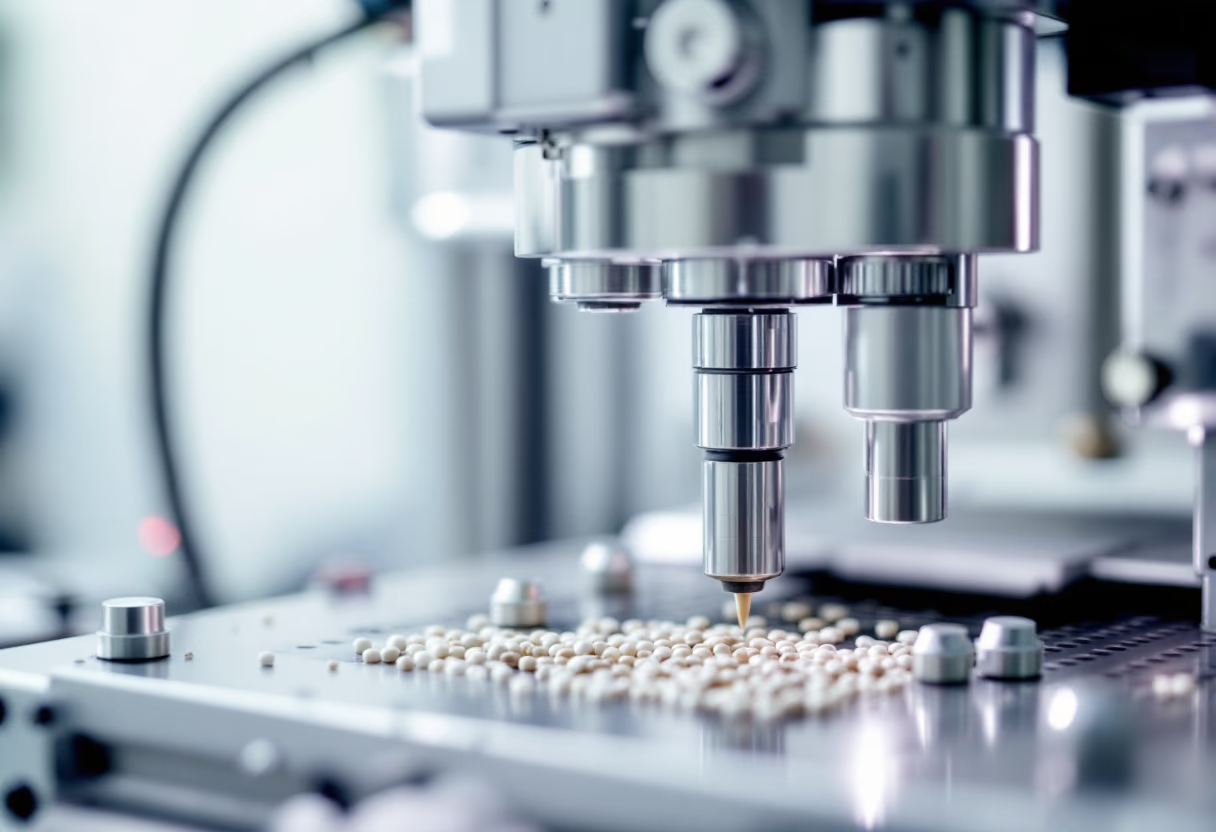Supporting internal discovery through hands-on experimentation, controlled material sourcing, and custom formulation workflows.



Small-batch prep for exploratory research. We develop, adjust, and evaluate early-stage formulations for internal protocols.
In-house analysis of compound stability, solubility, and cross-material compatibility using controlled conditions.
Refining experimental procedures to improve consistency, reliability, and reproducibility across lab trials.
Procurement of research-grade reagents and consumables for exclusive internal use in R&D workflows.
![<subject>[background image] image of robotics lab (for a robotics and automation)</subject>](https://cdn.prod.website-files.com/68815b369fdb317465d1967a/68815dbd0d21d5276df81388_10cd400b-5858-4f98-b2f6-a3d1a7086c4d.avif)
In-lab solution prep, method refinement, and compound benchmarking for early-stage R&D. All processes are internal and research-use only.
Controlled protocol development, stability assessment, and cross-material comparisons to support internal scientific integrity.
Procurement of lab-use-only reagents, buffers, and standards from verified suppliers. All materials are applied exclusively in internal workflows.
Batch logs, prep notes, and protocol tracking systems ensure scientific accuracy and support audit-ready compliance for lab operations.
Current findings from our in-house R&D. See ongoing formulation, testing, and method development across our workflows.

Testing solvent systems for improved solubility and stability in compound prep.


Implementing structured batch documentation to support traceability and reproducibility.


Refining quality control steps for in-lab testing and material verification.


Monitoring buffer stability over time to inform storage and usage guidelines.


Reviewing supplier performance and material quality for recent reagent acquisitions.


Streamlining internal processes to improve efficiency and data integrity in experiments.

We recently refined our internal buffer prep procedures for pH-sensitive experimental workflows, particularly involving multi-step solution layering. By comparing pre-mixed buffers to fresh in-lab formulations, we identified stability differences after 72 hours at 2–8°C.To minimize drift and ensure reproducibility across trials, our team adjusted our calibration protocol, switching from standard Tris-HCl to a low-interference MES buffer in two of our baseline workflows. All pH validation was done with traceable meters under controlled temp and humidity.While this doesn’t represent a finalized SOP, it supports future in-house prep optimizations for early-stage compound dissolution studies.

As part of a recent material sourcing trial, we conducted in-lab purity assessments across three variants of a research-use compound sourced from separate suppliers.Though all met advertised specs, we observed visual particle inconsistencies and minor shifts in final mass after 48-hour room-temp exposure, prompting us to isolate one lot for further benchmarking.Gravimetric checks were performed in triplicate. Future rounds will integrate dry weight recalculations post-drying to validate handling and carrier consistency.This is part of an ongoing effort to internally qualify material inputs prior to solution prep and method development.

We recently tested modifications to our internal suspension protocol to reduce settling during long-duration bench work.By adjusting stir rates and incorporating a non-ionic stabilizer, we observed increased dispersion time (up to 27% longer) without affecting compound reactivity in early solubility tests.These adjustments are being evaluated for broader use in internal test media, particularly for material screening workflows that require ambient bench storage.All work was conducted in-house using lab-verified ingredients and tracked via standard batch logs.

We evaluated three common buffer systems—Tris, HEPES, and phosphate - to determine compatibility with pH-sensitive compound preps. Preliminary results indicate superior stability in HEPES-buffered samples after 48 hours. Additional trials are underway to assess impact on downstream solution performance.

Our team screened two alternate suppliers for core reference standards used in early-stage benchmarking. Analytical comparison confirmed equivalent solubility and gravimetric purity. One variant exhibited improved shelf stability under standard storage conditions and is now the default reference for internal prep workflows.

We completed a quarterly documentation review to align internal batch logs and prep procedures with updated lab workflows. Revisions included clarifying compound handling thresholds and incorporating reagent batch tracking for all custom solution preps. All changes have been implemented in the active documentation portal.

Key details on our research workflows.
We focus on early-stage formulation development, precision batch preparation, and exploratory method design tailored for life science workflows.
Our operations are dedicated to proprietary projects and are not available for external contracting or service engagements.
We work with trusted vendors who specialize in high-purity compounds and verified research-use-only materials, all used exclusively within our lab framework.
We follow industry best practices for non-commercial research, with a strong focus on reproducibility, documentation, and scientific integrity.
SP Scientific is a privately operated research and development lab based in the United States. Our focus is on internal-use experimentation across a wide range of scientific disciplines, including chemical formulation, compound analysis, and small-batch protocol development.
Our work spans the full scope of early-stage R&D - from solution preparation and stability testing to comparative material analysis and method refinement. Every process is executed in-house using research-grade materials sourced from trusted suppliers, allowing us to maintain full control over quality, traceability, and reproducibility.
We do not serve external clients. All sourcing, testing, and documentation are conducted solely to support our own experimental workflows. This internal-use model gives us the flexibility to evaluate a broad range of inputs, optimize complex formulations, and explore new methodologies without external constraints.
Our lab infrastructure supports temperature-controlled storage, traceable batch prep, and multi-step solution workflows, ensuring reliable and compliant practices throughout. Whether we’re running parallel compound comparisons or validating new preparation techniques, our objective remains the same: build reliable data through disciplined, methodical research.
Supplier, collaboration, or inquiry requests.